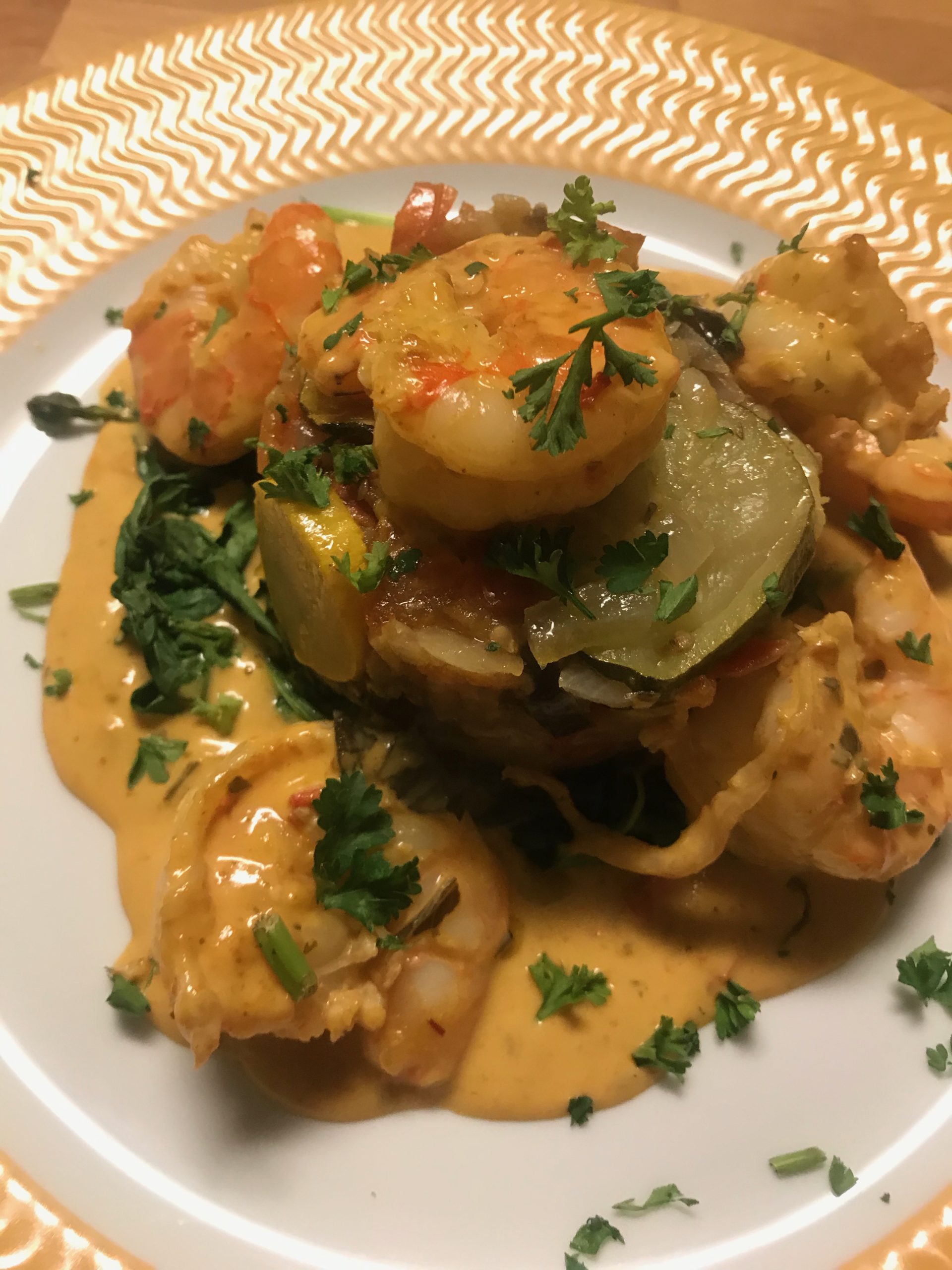 Ratatouille and Indian coconut curry shrimp. How often have I returned home and craved specific exotic flavors, even though the dishes didn’t make sense as a combination. Confronted with preparing the menu in my mind, my excuse was always that too many different ingredients needed to be purchased, or worse, that time was of the essence. Hence, I would mosey to a favorite Chinese, Indian or Vietnamese restaurant, or stay home and cook a favorite staple dish.
Ratatouille and Indian coconut curry shrimp. How often have I returned home and craved specific exotic flavors, even though the dishes didn’t make sense as a combination. Confronted with preparing the menu in my mind, my excuse was always that too many different ingredients needed to be purchased, or worse, that time was of the essence. Hence, I would mosey to a favorite Chinese, Indian or Vietnamese restaurant, or stay home and cook a favorite staple dish.
The other day, I wanted an exotic flavor and while debating what to cook (and resisting my usual range of excuses) I opened the day’s mail. I was happy to browse the pamphlet sent by our local grocery store promoting new PRIVATE Selection items. While we trust staple brands, we always remain open to new products and, featured in the attractive brochure, was a seemingly tasty and good-looking dish created with the store’s ready-made Indian coconut curry sauce. The dish was exactly what I wanted; it was exotic, easy to cook, and seemed special. But what about a vegetable as an accompaniment as I didn’t necessarily want a carbohydrate, and normally rice would have been key to this Asian dish.
Ratatouille
Rekindling memories of the earthy and healthy Provencal dish called Ratatouille, I decided to create something distinctive: a fusion between South Asian flavor and a traditional French-Mediterranean dish of stewed vegetables using onion, garlic, tomato, green and yellow zucchini, eggplant and Herbes de Provence. In the end, combining French flair and western style cooking techniques with an Asian semi-sweet dish resulted in a flavor that was more subtle than what I had imagined. The mixture was surprisingly rich and offered a unique flavor, all the while each dish kept its distinctive taste, texture, and presentation.
How to cook ratatouille
I had cooked ratatouille several times and will be honest that I didn’t carefully review the cooking sequence until it was ready to go in the oven. I had however performed the important step of salting the sliced eggplant so that all excess moisture could be removed. But for the other required steps that called for baking certain ingredients while sautéing others in a skillet, I had instead simply cut all vegetables into various sizes and shapes—to give the palette different experiences—and added chopped garlic, a diced onion, salt and pepper, and a generous splash of olive oil.
Realizing my “mistake” but committed to my new method, I baked the vegetable mixture at 500-degrees Fahrenheit, gently tossing occasionally so the vegetables would not break. When finished, the ratatouille was out of this world. Rather than the traditional texture of stewed vegetables, the skin of each vegetable was slightly charred and the colors of the flesh were almost intact, which brought a visual delight to the entire dish.
While my version of the ratatouille was baking, I prepared the shrimp dish, which was straightforward. I grilled the shrimp—I chose the largest available, thus there would be 4-5 for each plate—and when they were still slightly pink, I added the pre-made India coconut curry sauce, and let it cook a couple of minutes more until the shrimps were nicely coated and fully cooked.

Image 1: final dish with shrimps (author’s collection)
Conclusion
For the presentation, I set some of the warmed coconut sauce directly on the plate, added some cooked spinach, and sprinkled Japanese spices on top to add a bit of heat. Then I used a round mold for the ratatouille to give it a geometrical form and placed it in the center of the sauce. Next, I added the shrimp with a dash of extra sauce. As a last touch, I sprinkled the presentation with chopped cilantro and a pinch of kosher salt.
The meal turned out beautifully, and was very flavorful. My French-Asian dish was born. Hopefully the first of many to come. Bon Appetit!
To replicate this dish, please visit Coconut shrimp and Ratatouille